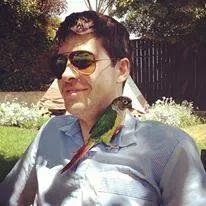In this lesson you will learn to recognize the hiragana characters in the table below.
Note that some characters look really similar to the characters above them. The two small strokes at the top right are called dakuten. The dakuten signifies that the consonant in the mora is voiced. Remember that a mora in Japanese is roughly equivalent to a syllable in English, and that a mora represents a single unit of time.
A consonant is voiced when we vibrate our vocal chords while pronouncing it. So whereas we don't vibrate our vocal chords while pronouncing the t, we do so while pronouncing the d. Except for the vibration of the vocal chords, the production of the t and d sounds is the same.
In the table below you can see all base hiragana characters. Once you know all of them, you will be able to write all hiragana sounds. We will show this table in all hiragana lessons and highlight the characters you have learned so far.
| Hiragana | a | i | u | e | o |
|---|---|---|---|---|---|
| - | あ | い | う | え | お |
| k | か | き | く | け | こ |
| s | さ | し | す | せ | そ |
| t | た | ち | つ | て | と |
| n | な | に | ぬ | ね | の |
| h | は | ひ | ふ | へ | ほ |
| m | ま | み | む | め | も |
| y | や | ゆ | よ | ||
| r | ら | り | る | れ | ろ |
| w | わ | を | |||
| n | ん | ||||

